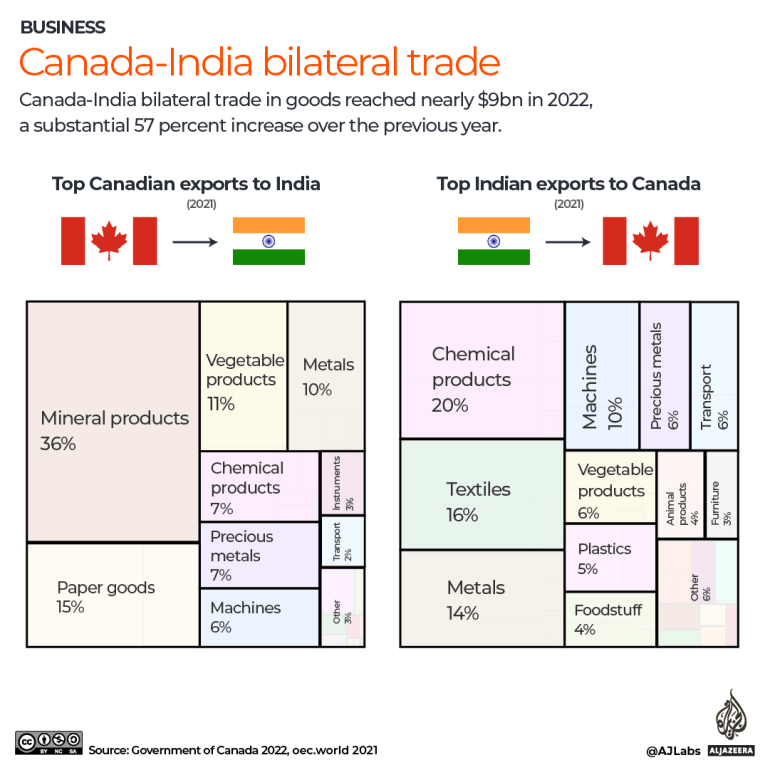Trump Vs. Reality: The Facts On US-Canada Trade Relations

Table of Contents
The NAFTA/USMCA Debate: Rhetoric vs. Results
The North American Free Trade Agreement (NAFTA), in place since 1994, became a focal point of the Trump administration's trade policy. The narrative surrounding NAFTA, and its replacement, the USMCA, heavily influenced public perception of US-Canada trade relations.
Trump's Criticisms of NAFTA
The Trump administration frequently criticized NAFTA, arguing that it had harmed the US economy. Specific points of contention included:
- Job losses: The claim was made that NAFTA led to significant job losses in the US manufacturing sector due to companies relocating to Mexico.
- Trade deficits: The administration highlighted persistent trade deficits with both Canada and Mexico as evidence of an unfair trade agreement.
- Unfair treatment: Concerns were raised regarding perceived unfair treatment of US businesses and workers under the existing NAFTA rules.
However, economic data and expert analysis largely refute these claims. Studies conducted by organizations like the Congressional Budget Office showed that NAFTA's impact on US job creation was minimal, while others demonstrated that trade deficits are a complex issue influenced by numerous factors beyond trade agreements.
The USMCA Agreement: A New Chapter?
The United States-Mexico-Canada Agreement (USMCA), signed in 2018 to replace NAFTA, aimed to address some of the Trump administration's concerns. Key changes included:
- Automotive manufacturing rules of origin: More stringent rules were implemented to encourage greater North American content in vehicles manufactured in the region.
- Dispute resolution mechanisms: Changes were made to the dispute settlement process, aiming for more efficient and effective resolution of trade conflicts.
- Digital trade: New provisions were added to address issues related to digital trade and e-commerce.
The USMCA’s actual impact on US-Canada trade remains a subject of ongoing analysis. While some of the stated goals of the Trump administration, such as increasing North American content in automobiles, have been partially achieved, the overall economic impact is complex and continues to be debated. The agreement retained much of the core framework of NAFTA, highlighting the enduring economic ties between the two countries.
The Impact of Tariffs and Trade Disputes on US-Canada Relations
The Trump administration's use of tariffs significantly impacted US-Canada relations.
Steel and Aluminum Tariffs
The imposition of tariffs on Canadian steel and aluminum in 2018, justified on national security grounds, sparked immediate retaliation from Canada. This led to:
- Economic consequences: Both countries experienced negative economic consequences, including job losses in affected industries and increased prices for consumers.
- Escalation of tensions: The trade dispute further strained already tense relations between the two countries.
Analysis suggests these tariffs had limited effectiveness in achieving their stated objectives, mainly due to the intertwined nature of the steel and aluminum industries across the border.
Lumber Disputes
The long-running softwood lumber dispute between the US and Canada continued during the Trump administration. The administration pursued various trade actions, including:
- Anti-dumping and countervailing duties: The US government imposed duties on Canadian lumber, claiming unfair pricing practices.
- Negotiations and settlements: Various rounds of negotiations and temporary agreements were reached, but the underlying issue remained unresolved.
These actions created uncertainty for both the Canadian and US lumber industries and contributed to ongoing tension in US-Canada trade relations.
Beyond the Headlines: The Enduring Economic Ties Between the US and Canada
Despite the rhetoric and trade disputes, the fundamental reality remains: the US and Canadian economies are deeply integrated.
The Integrated Nature of the North American Economy
The volume of cross-border trade and investment between the US and Canada is staggering:
- Goods and services: Billions of dollars worth of goods and services are traded annually between the two countries, encompassing a wide range of sectors.
- Intertwined supply chains: Countless supply chains rely heavily on the seamless flow of goods and services across the border.
This profound economic interdependence makes it exceedingly difficult, if not impossible, to completely decouple the two economies.
The Importance of Supply Chains
Canada plays a critical role in US supply chains for various industries, including:
- Automotive: Canada is a major supplier of automotive parts and components to the US auto industry.
- Energy: Canada is a significant supplier of energy resources to the US.
- Agriculture: Canada supplies significant amounts of agricultural products to the US market.
Disrupting these supply chains would have significant negative consequences for both economies, highlighting the importance of stable and predictable trade relations.
Conclusion: Understanding the Nuances of US-Canada Trade Relations
This examination of US-Canada trade relations during the Trump era reveals a complex picture. While the rhetoric often focused on conflict and disagreement, the reality underscores the deep and enduring economic interdependence between the two countries. The USMCA, despite its changes, largely preserved the framework of NAFTA, a testament to the intrinsic interconnectedness of the two economies. Understanding the nuances of this relationship, beyond the headlines and political pronouncements, is vital for fostering continued cooperation and mutual prosperity. Learn more about the complexities of US-Canada trade relations by exploring reputable sources of economic data and analysis. Continue exploring the facts on US-Canada trade to gain a more informed perspective on this crucial bilateral relationship.

Featured Posts
-
 L Impact De La Decentralisation Du Repechage Sur La Lnh
May 15, 2025
L Impact De La Decentralisation Du Repechage Sur La Lnh
May 15, 2025 -
 Lindungi Warga Pesisir Dpr Dukung Pembangunan Giant Sea Wall Untuk Perlindungan Pantai
May 15, 2025
Lindungi Warga Pesisir Dpr Dukung Pembangunan Giant Sea Wall Untuk Perlindungan Pantai
May 15, 2025 -
 Ere Zilveren Nipkowschijf Voor Jiskefet Een Verdiende Eer
May 15, 2025
Ere Zilveren Nipkowschijf Voor Jiskefet Een Verdiende Eer
May 15, 2025 -
 San Jose Earthquakes Opposition Scouting Report Key Strengths And Weaknesses
May 15, 2025
San Jose Earthquakes Opposition Scouting Report Key Strengths And Weaknesses
May 15, 2025 -
 50 000 Fine For Anthony Edwards Following Fan Exchange
May 15, 2025
50 000 Fine For Anthony Edwards Following Fan Exchange
May 15, 2025
